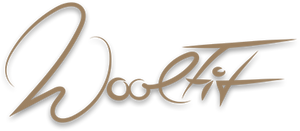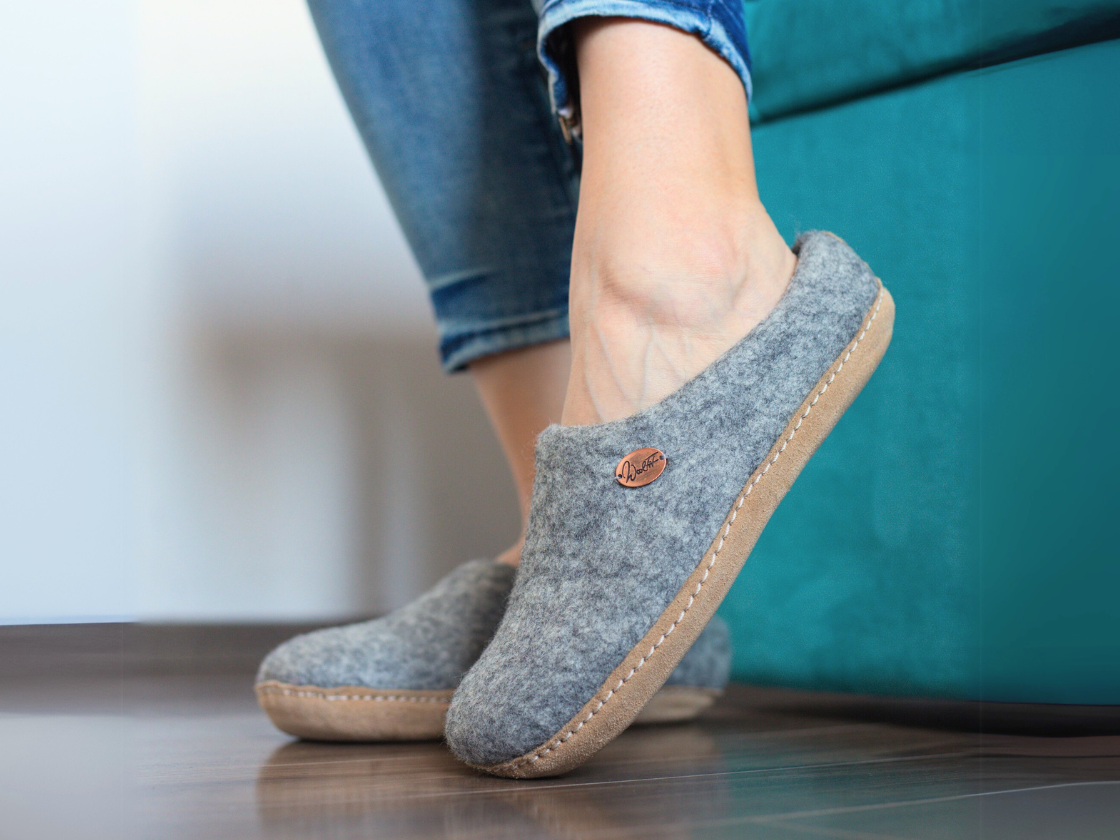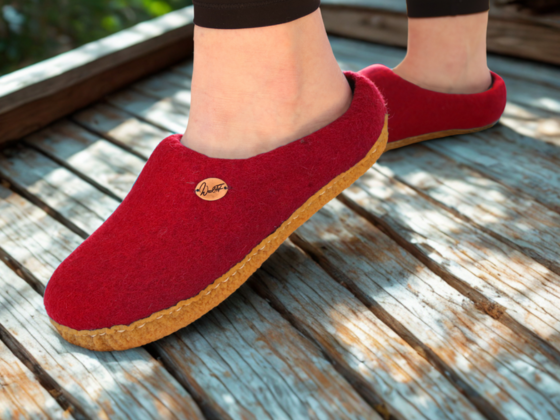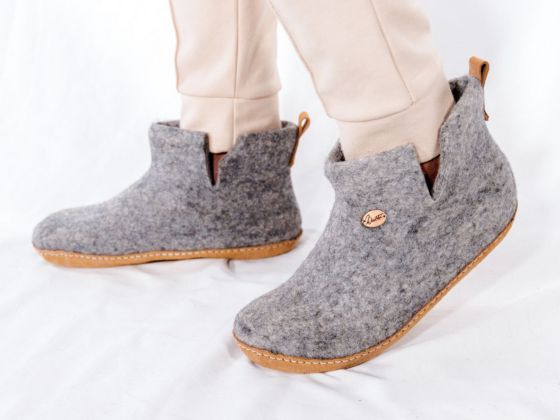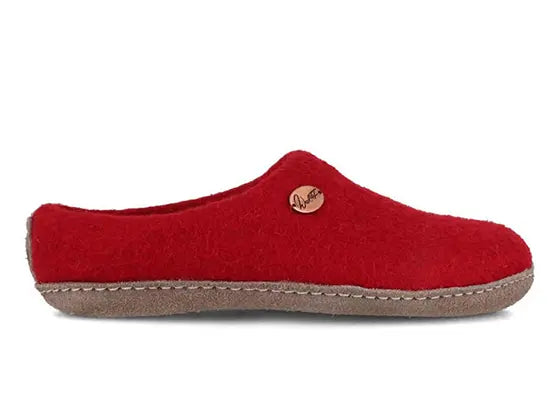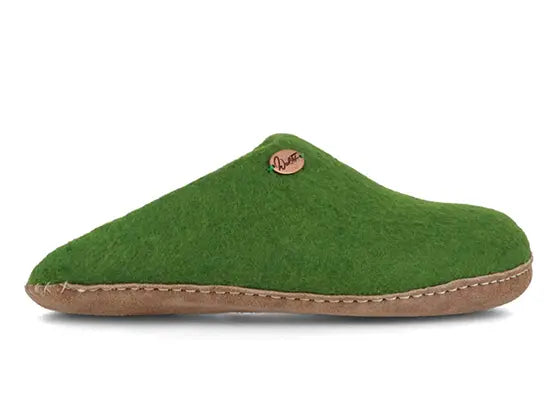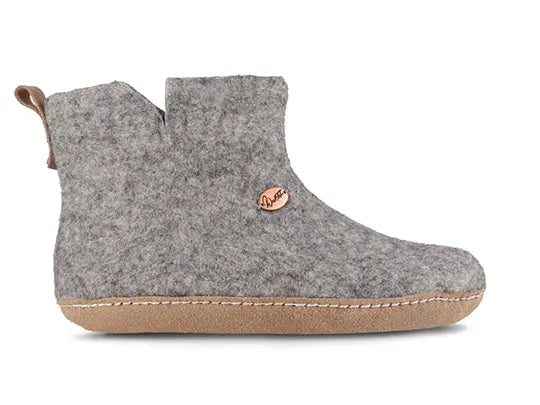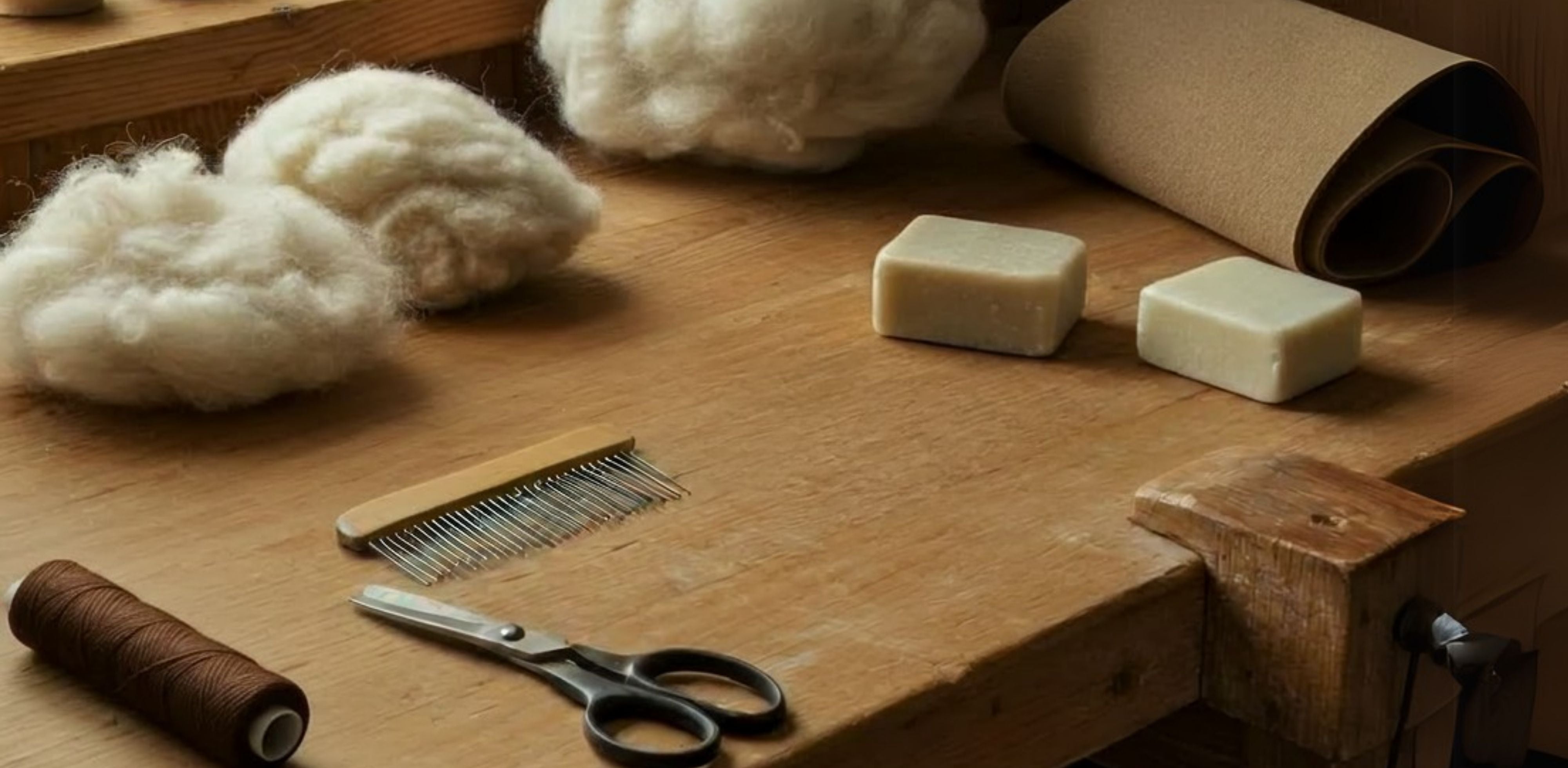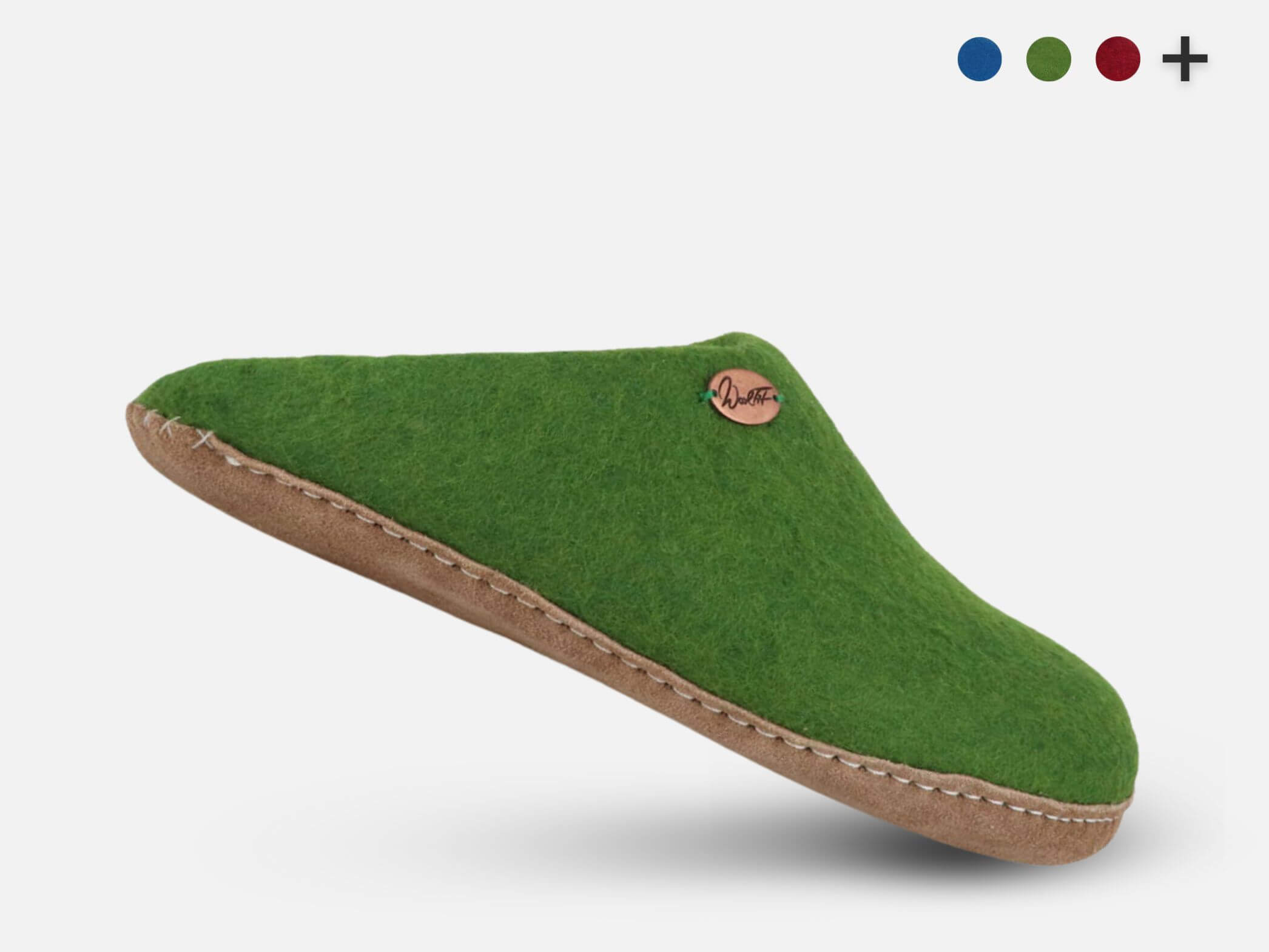WoolFit Slippers Craftsmanship
Each of our pairs of WoolFit slippers involves more than 6 hours of handcraftsmanship and centuries-old techniques. We would like to invite you on a journey through the traditional felting process, that remained the same in principle for thousands of years: Water, wool and a set of hands, crafting the wool into felt to use for tents, saddles, clothing and so much more.
We're convinced that wool is the best material for slippers and have been for over 25 years. It's properties are uniquely suited to be used as footwear: Breathable, soft, great insulation, durable, odor-resistant - the full package.
Come and join us on a journey to find out how WoolFits are made.
Every WoolFit Slipper
Starts with 100% natural wool
(Hands down the best material for slippers. Why? Find out here)

It all starts with the sheep...
Once a sheep needs a new haircut, the journey of our slippers begins. The wool we use for some styles comes from New Zealand and is mulesing-free and some from local shepherds in Nepal, at the foot of the Himalayan mountains. The sheep are still raised there in a traditional and resource-friendly way. In addition, the wool is wonderfully soft, breathable, and has proven to be an effective insulator against the cold winter.

...then cleaning the wool...
At this point, the wool is very coarse and dirty. The cleaning process involves washing in hot water to loosen any dust or greasy matter. Washing helps to clean away any impurities that are left over from the shearing and sorting process.

...and finally, layering the wool.
Our seamless felted slippers begin their WoolFit existence in sock form. Layer by layer, the cleaned and combed wool fleece is wrapped around a last and shaped into the desired form with warm soapy water. The thicker the layer becomes, the firmer the felting can be.

Wet and Soap the wool and start felting
Each felt sock undergoes a prolonged process of vigorous agitation and friction, typically lasting several hours. This intense mechanical action is critical to the transformation of loose wool fibers into a dense, durable fabric. During this phase, the wool is kept consistently wet with warm, soapy water—a key component that helps open up the tiny scales on each wool fiber. These microscopic scales, naturally present on the surface of wool, act like hooks.
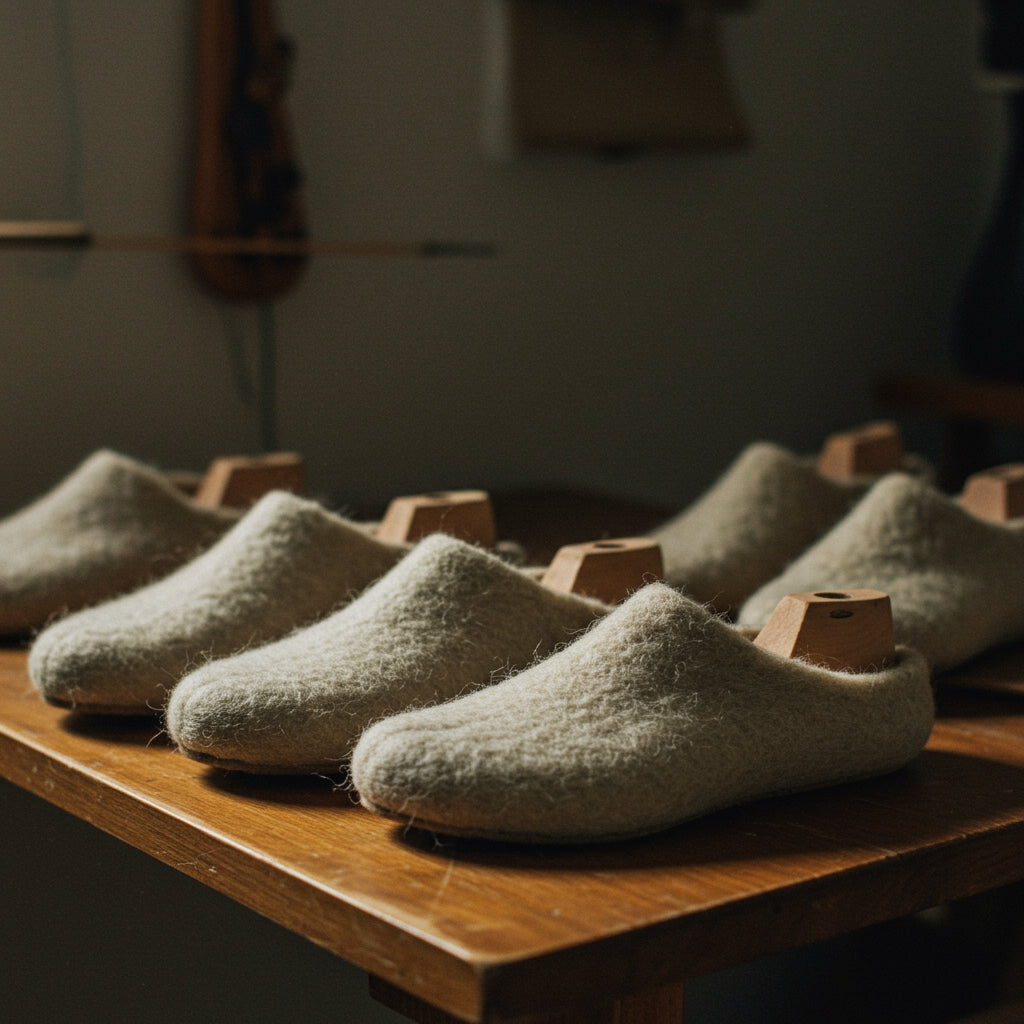
Shaping and Firming
We use a specially designed, anatomically pre-shaped last—essentially a mold—that closely mirrors the natural contours of the human foot. Its ergonomic form is carefully crafted to support the foot’s arches, accommodate toe spread, and provide a comfortable heel fit. This foot-friendly shape ensures that each felt sock conforms not only to the general outline of a foot but also promotes a natural, pressure-free fit, enhancing both comfort and wearability over time.

Cutting the sole
We have chosen a vegetable-tanned leather sole, which is sustainably produced without the use of harmful chemicals and is derived as a by-product of the meat industry. This noble material is not only more environmentally friendly, but also offers excellent grip on a variety of surfaces and feels especially cozy underfoot. Once the leather has been tanned and finished, each sole is carefully cut by hand—or with the aid of precision tools—into the exact shape of the outsole, following the contours of the felt sock. This ensures a perfect fit and a seamless bond between the felt and the leather, enhancing both comfort and durability.

The Gluing of the Sole
The slipper is carefully joined with the sole through a meticulous gluing process designed to ensure a smooth, durable bond. A high-quality, non-toxic adhesive is evenly applied to both the felt base of the slipper and the vegetable-tanned leather sole. This adhesive must be worked quickly but precisely, as it begins to cure shortly after application. The two surfaces are then aligned with great care, and the sole is pressed firmly onto the felt to create a strong, seamless connection. Special attention is paid to avoid any wrinkles, gaps, or air bubbles during this stage, which could compromise the comfort or longevity of the slipper.

Double protection
Compared to many other slipper manufacturers, we go the extra mile by not only gluing but also stitching the sole to the slipper. This additional step, though more time-consuming and labor-intensive, significantly enhances the durability and longevity of the product. After the sole has been carefully glued in place and allowed to set, it is meticulously stitched to the felt upper using strong, wear-resistant thread. This hand- or machine-sewn seam acts as a mechanical reinforcement, ensuring that the sole remains securely attached even under daily wear and flexing. It also adds a distinctive handcrafted touch, reflecting our commitment to quality craftsmanship and long-term comfort—something mass-produced slippers often lack.

Finished is the WoolFit
Now it just has to find its way to the USA.
In this picture, Mr. and Mrs. WoolFit are visiting our production site in Nepal with the finished pairs of WoolFits and one of our expert artisans.
Curious to see who felted your pair of WoolFits?
Thank you
We are truly proud to have created a product that brings joy to the feet and hearts of our customers. We are convinced that wool is the best material for slippers. Therefore, we have deliberately chosen small manufacturing companies and art collectives as our partners, who are committed to developing unique products with us. We would be delighted if you would join us on this journey and tell others about us.

